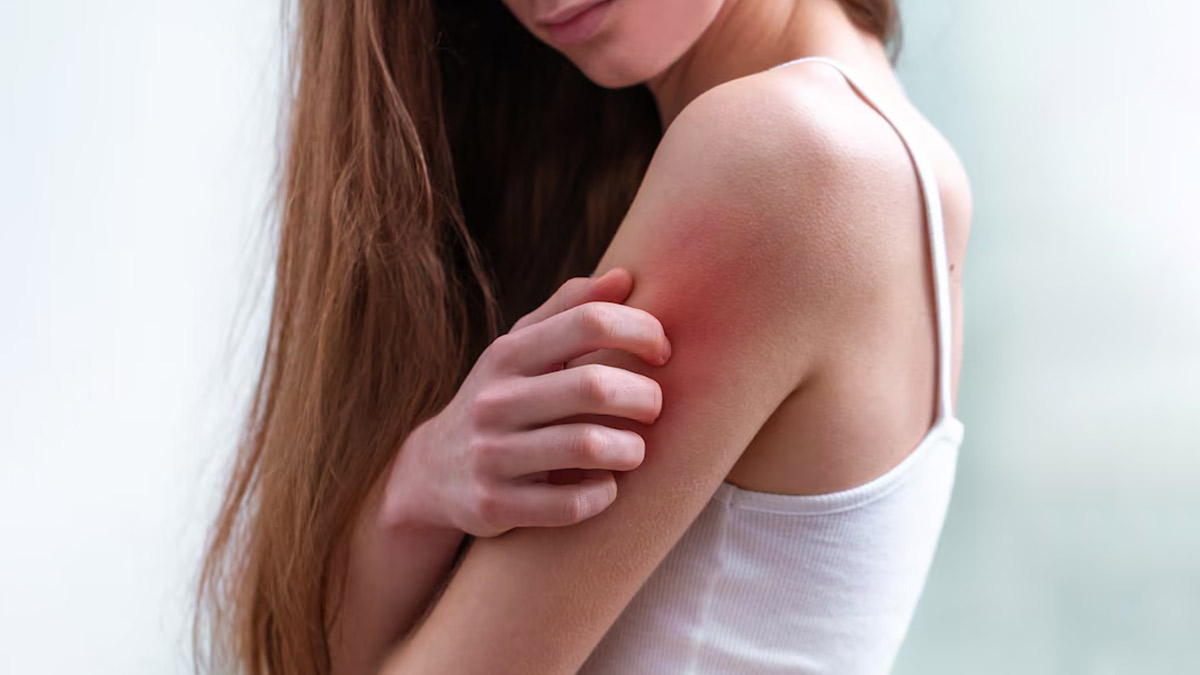
Mercury is rising, and people are struggling to protect themselves from heat-related illnesses. Amid scorching heat, excessive sweating has become a common problem, leading to an increased risk of heat rash.
Table of Content:-
Heat rash, also known as prickly heat, is a common skin problem that can affect children and adults alike. These usually occur in hot and humid climates, particularly when there is a lot of sweating involved or if the body is unable to release heat. To prevent heat rashes, it is extremely important to maintain cleanliness and hygiene. In this article, you will not only learn about what heat rash is and why it occurs, but also find out about ways to prevent and manage it. So, let’s delve right into it.
Also Read: Summer Skin Rashes: Dermatologist Explains Causes And Treatment
What Does A Heat Rash Look Like

According to the Mayo Clinic, heat rash is characterised by 'small blisters to deep, inflamed lumps,' some of which can also be very itchy.
Research suggests that miliaria, or heat rash, is very common among neonates, individuals suffering from increased sweating, and people living in hot and humid conditions.
Miliaria rubra is the most common form of heat rash that frequently occurs in neonates between one and three weeks of age. It can also affect up to 30% of adults living in hot and humid conditions, as per StatPearls Publishing.
Why Excess Sweating Causes Heat Rash

Excessive sweating is one of the most common risk factors for heat rash. This is because when you sweat, it gets trapped under your skin, clogging pores and causing irritation.
The rash itself is itchy and uncomfortable, but usually harmless. In fact, most heat rashes resolve on their own without any scarring. However, if left unchecked and unmanaged, it can lead to infection with bacteria, causing inflammation and worsening itchiness.
Also Read: Warning Signs Of Heat Stroke You Should Know Amid Rising Temperatures, Ways To Prevent It
Hygiene Tips To Follow

Here are some ways to prevent and manage heat rash effectively:
- Shower regularly, especially if you sweat a lot, as bacteria can contribute to heat rash.
- Remember to pat your skin dry after bathing.
- Wear lightweight, loose-fitting clothing made of breathable fabrics like cotton.
- Use talcum powder in areas prone to sweating, such as the underarms and groin.
- Limit prolonged exposure to direct sunlight, especially during the hottest parts of the day.
- Avoid scratching or rubbing the affected areas, as this can worsen the condition.
Conclusion
During the summer, sweating is unavoidable. While it is mostly harmless, it is important to practise proper hygiene to avoid developing heat rashes. This includes maintaining skin dryness through regular showers, utilising talcum powders, and wearing breathable clothing to reduce moisture buildup and friction. Additionally, drink plenty of water to stay hydrated and seek cooler environments to sleep and rest. If you’re concerned about your rashes, it is best to consult a dermatologist.
Also watch this video
How we keep this article up to date:
We work with experts and keep a close eye on the latest in health and wellness. Whenever there is a new research or helpful information, we update our articles with accurate and useful advice.
Current Version
